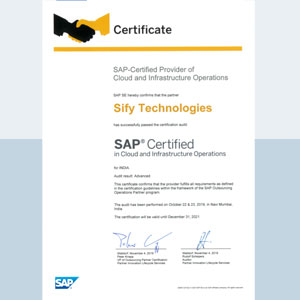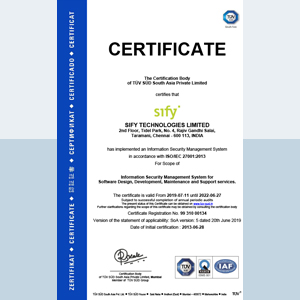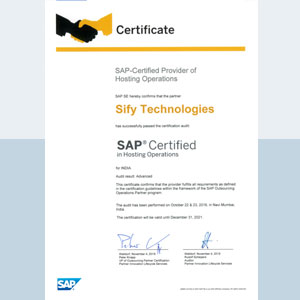Table of contents
Slow network performance is a revenue and service risk disguised as minor delay. It shows up as longer page loads, jittery calls, sluggish internal tools, and API timeouts. In this blog, we’ll define the business impact, identify the main causes, show why band-aid fixes don’t last, outline a reliable diagnostic path, and share practical steps to prevent recurrences.
Related reading: The future of AI network management in India
How to reduce network downtime in large enterprises
What slow network performance really means for businesses
To users and customers, “slow” is a degraded experience. To the business, that translates into abandoned carts, lost calls, frustrated employees, and delayed decisions. Even when systems do not fully fail, persistent slowness can have a far-reaching impact. Today, “slow” also disrupts connected operations. In IoT-driven environments and AI-assisted workflows, extra milliseconds delay sensor-to-system decisions, thereby slowing assembly lines, warehouse robots, video analytics, and real-time fraud or recommendation engines.
The business effects show up quickly. Even small increases in page or API response time can reduce conversion and payment success, while call quality issues raise average handle time in contact centers and pull down customer satisfaction. Internally, teams lose time to workarounds and retries, slowing projects and decisions. Costs rise when organizations overprovision to mask process problems, pushing up total cost of ownership without fixing the root cause.
Over time, repeated performance issues erode trust with customers and partners, and in regulated sectors they invite additional scrutiny.
Facing issues with slow network performance? Schedule a network health assessment today to identify bottlenecks on your critical corridors. Know more.
Root causes: congestion, outdated hardware, latency, and poor configurations
Most cases of slow network performance trace back to a few recurring factors working together. Congestion builds when links or queues stay busy at peak hours or during campaigns. Outdated or stressed hardware, including aging optics, switches, or routers, adds errors and retransmissions that quietly increase delay. Latency and jitter rise when sites are far apart or routes are sub-optimal; the variability is especially hard on voice, video, and real-time APIs.
Misapplied configurations also play a role: QoS set the wrong way, asymmetric policies, or routing choices can push critical workloads onto lower-quality paths. When traffic patterns change (e.g. new SaaS endpoints, a marketing campaign, or a shift in branch-to-cloud usage) static routes keep sending important workloads over second-best paths or lower-priority queues. The result is avoidable delay.
By contrast, policy-driven networks (e.g., SD-WAN) can adjust paths and priorities in near real time; if you’re not using them, or they’re misconfigured, slow performance lingers even when capacity looks fine.
External dependencies matter too – cloud region slowdowns, third-party APIs, or DNS issues often make the network look guilty. Finally, security load such as DDoS events or noisy malware traffic consumes bandwidth and processing, leaving less headroom for legitimate use. Many slowdowns sit below static alert thresholds. This brings us to AI-based network management, which learns normal patterns and flags that drift early so you can act before users feel it.
Why fixes often fail: patches vs. systemic issues
Many organizations treat a symptom (adding bandwidth, restarting a device, or tweaking a single rule) without confirming the first cause or verifying the result against user-facing goals. Problems – including slow network performance – typically involve multiple layers, including link, route, policy, application, and third parties.
A durable fix requires a clear picture across those layers and a way to prevent the same pattern from returning.
How to diagnose slow network performance effectively
Before you jump into tools, align on a shared view of the problem, align on a shared view of the problem and restore end-to-end visibility across layers. The goal is a quick, repeatable workflow that business and technical teams can run together in the same meeting. Start with the user journey that’s impacted, narrow the time and path, confirm whether policies match business priorities, and only then change anything. Of course, predictive and adaptive AI-driven automation can make this process more dynamic – catching drifts and issues and even recommending the best course of action before network impact happens.
The outcome you want is a clearly documented first cause (the earliest technical event in the chain that started the outage/slowness) and a fix that is proven by user-facing metrics.
Use a simple, repeatable approach that business and technical teams can follow together:
- Define the user impact.
Which journeys are slow (checkout, login, voice calls, internal apps)? What is the target response time or quality metric? - Capture the time window and path.
When does slowness occur (peak hours, specific days)? Which sites, regions, or cloud endpoints are involved? - Check the path health.
Review link utilization, packet loss, and round-trip time across the actual path used. Confirm whether the traffic is taking the intended route. - Confirm policy and configuration.
Ensure QoS priorities and routing policies match business importance. Look for asymmetries or overrides that send critical traffic to a congested or lower-quality path. - Test independently.
Run synthetic transactions for the affected journey from the same locations. Compare results to application logs and user reports. - Isolate external factors.
Validate cloud region status, third-party APIs, DNS, or security events that might be adding delay. - Document the first cause and verify the fix.
Implement the change, then confirm improvement against user-facing metrics – not just device counters.
Best practices to prevent slow network performance in enterprises
- Prioritize by business value.
Identify your top user journeys and assign clear performance targets. Ensure policies (routing and QoS) reflect those priorities across sites and clouds. - Right-size capacity, keep headroom.
Plan for peak periods and campaigns; maintain enough buffer so short bursts do not affect critical applications. Avoid blanket overprovisioning. - Keep routes healthy and diverse.
Use diverse paths and providers for key corridors; monitor latency and loss continuously. Prefer shorter, consistent routes for real-time workloads. - Standardize and verify configurations.
Maintain “golden” templates for sites and device classes. Automate checks for drift and verify changes with small, controlled rollouts. - Test what customers feel.
Run simple synthetic tests for your top journeys from representative locations. Alert on trends, not just hard failures. - Prepare for events.
Have a clear playbook for campaign peaks and brownout conditions (e.g., slow bulk transfers, protect payments and voice, switch to alternate paths). - Review regularly.
Track response times, packet loss, and customer-experience metrics together in monthly reviews; prioritize fixes that reduce recurring issues.
A real-world scenario
During peak hours, a consumer app’s checkout began to lag. Product analytics showed p95 page time rising from ~2.1s to ~3.4s, and payments success dipped a few points.
A quick review of recent changes uncovered the cause: a policy update had shifted payment traffic into a lower-priority class that sometimes took a busier route.
Fixes included the following:
- The team switched the traffic back to the preferred route. They confirmed things were faster now using both test checkouts and real customer orders.
- Checkout times for almost all users dropped back to about 2.2 seconds, network delays returned to roughly 90 ms – all without buying extra bandwidth.
- To avoid a repeat, they tightened the standard setup so critical payment traffic can’t be downgraded, added an alert if the route changes unexpectedly, and paused non-urgent changes during peak hours.
The takeaway: tie diagnostics to the user journey, validate the actual path, and make simple policy corrections before considering capacity spend.
Where Sify can help
Sify brings together carrier-neutral data centers, an India-wide backbone, and managed operations to keep your most important traffic fast and reliable across offices, data centers, and clouds.
What we do in a typical engagement
- Business first: We map your top journeys (checkout, payments, voice, key APIs) and set clear experience targets for each.
- Validate the routes that matter: We measure performance on your critical metro corridors (e.g., Mumbai ↔ NCR, Chennai ↔ Bengaluru) and confirm traffic is taking the best available paths – on-net, to cloud, and between data centers.
- Protect critical workloads: We tune policies so priority traffic (payments, customer apps, contact center) is safeguarded during busy periods, while bulk jobs are shaped to avoid contention.
- Add simple, always-on tests: Lightweight synthetic checks from your key locations watch what customers feel and trigger early warnings before users complain.
- Operationalize change safely: We align change windows with India’s peak cycles (evenings, payroll days, festive sales) and keep a clean, auditable template to prevent accidental downgrades.
- Show progress in business terms: Dashboards report time-to-detect, time-to-recover, and user-experience metrics, so leaders see reliability improving month over month.
Ready to see where performance is leaking and how to fix it without overspending? Let Sify alleviate slow network performance, harden the routes that matter, and prove the gains on real user metrics, then scale the same playbook across sites and clouds. Talk to us to start with a focused pilot and measurable outcomes.
Explore more: How to reduce network downtime in large enterprises·Top server security risks enterprises can’t ignore·























































